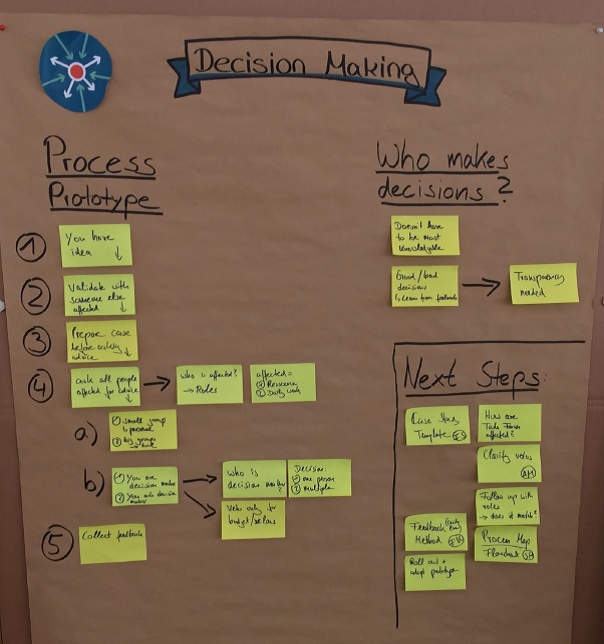How are the best decisions made?
Today, I’d like to share some insights about decision-making. At Testbirds, this is the first of our four “principles of organisation” – which we call “Orga 4.0”. As we’ve grown, we’ve needed to consider how to maintain a flat hierarchy without compromising our ability to make decisions efficiently. Who should be the decision-maker? Is that always the responsibility of the founders? Surely not. Majority vote? Also not. Middle management? We don’t have it and we don’t believe in it (see my previous article on that). Instead, we asked ourselves how the best decisions are made: by having all the relevant information, being able to understand the consequences of your decisions and aiming for the best outcome for your team and the company as a whole.
Like a group of friends
Without following a traditional structure, how should we organise a business? Well, what would we do in our private lives? I know, that if I were to make a decision for my friends, I would ask those involved for their opinions, take them all into consideration and then decide on what follows.
Why should this also not apply for a company? It only made sense that we implement a similar decision-making process that follows an advice process. Where the person(s) with the most relevant information make decisions by taking the opinions of those involved into account.
It works like this: when someone has an idea, they try to validate it with someone else in the company, who is impacted by it. After confirming a need for the proposed change, they then ask those affected for advice, by forming small groups with just one representative from every affected department. This facilitates discussion and feedback and ultimately enables the group to make informed decisions together.
In practice
How this looks in practice is: whenever someone has an idea for a new service, they ensure that a representative from development, sales, project management and marketing weigh in on the matter. HR or the founders are consulted about any legal or budgetary implications along the way. When the details have been finalised, the decision is communicated to the company and executed.
To further improve this process, I’d like to know what you all did in your respective companies. Did you implement a similar process and if so, how well has it worked?
Share it if you like it:
Tag Cloud
About the author
Philipp is a Founder and Board Member of Testbirds and supports us on strategic topics.
Categories
Links
Other content that might be interesting for you:
Testbirds specialises in the testing of software such as apps, websites and Internet of Things applications by using innovative technologies and solutions. Under the slogan, “Testing Reality”, the company offers various testing methods to its clients looking to optimise the user-friendliness and functionality of their digital products. With over 250,000 registered testers located in 193 countries, Testbirds is one of the world’s leading crowdtesting providers. In addition, the IT service provider utilises cloud based technologies to support customers in the optimisation of their digital products. The combination of the two testing methods delivers a unique and extensive portfolio that takes the quality of software to the next level. Testbirds was founded in 2011 by Philipp Benkler, Georg Hansbauer and Markus Steinhauser. Today, the company has over 100 employees. Other than its headquarters in Munich, there are now offices in Amsterdam, London and Stockholm, franchises in Hungary and Russia and sales partners in Italy.
© Testbirds GmbH. All rights reserved.









